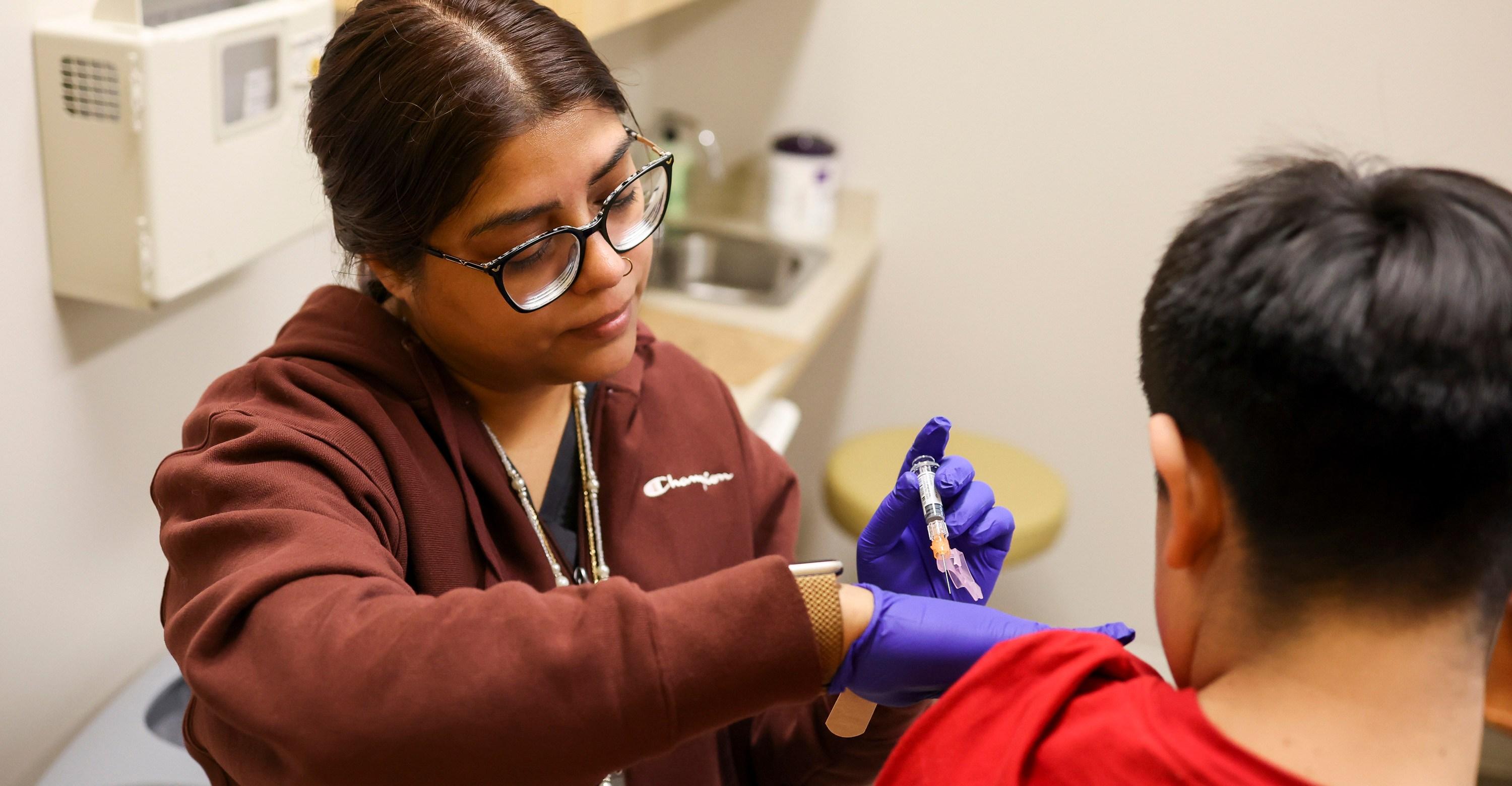We’re presently in what appears to be the worst Covid-19 summer surge in several years, especially in the southern US. According to data from the Centers for Disease Control (CDC), all of the metrics related to Covid-19 that we should be worried about are goi…

Published a year ago on Aug 20th 2024, 12:00 pm
By Web Desk

We’re presently in what appears to be the worst Covid-19 summer surge in several years, especially in the southern US. According to data from the Centers for Disease Control (CDC), all of the metrics related to Covid-19 that we should be worried about are going up — not just cases, but hospitalizations and deaths, too. Even if we’re no longer in the depths of the pandemic, and we have treatments to lessen its severity and vaccines for protection, contracting Covid-19 carries risks. That’s particularly true for people over 65, people with comorbidities like heart or lung disease, or those who are immunocompromised. And the lingering health challenges of long Covid remain a risk. The good news is that on the whole, Americans are much better protected than we once were against serious illness, because most people have been infected, vaccinated, or both. However, it’s still important to take precautions as Covid-19 cases increase in most states across the US. Here’s what we know so far about the surge this year, and what you can do to keep yourself and your community healthy. How do we know we’re in a summer surge? The Centers for Disease Control has found that cases are increasing or likely increasing in 32 states. This follows a seasonal pattern that’s begun to emerge with Covid. We saw a similar surge last summer, though according to CDC data, cases are exceeding levels from around this time last year. “It’s not just last summer — even when we were having the pandemic, if you look at the graphs, infection was always very high during the summer and also during the winter,” said Kizzmekia Corbett-Helaire, assistant professor of immunology and infectious diseases at Harvard’s School of Public Health. We don’t know exactly why the summer surge happens, Corbett-Helaire said. Some of it could be due to the underlying characteristics of the virus, and some due to human behavior, like increased travel. At the moment, Covid hospitalizations and deaths are rising but still relatively low — the latest data shows that 1.5 percent of deaths in the US are the result of Covid, and 2.3 percent of emergency room visits during the week ending August 3 were diagnosed as Covid-19. CDC data comes from a variety of sources. But one important source for tracking transmission rates is wastewater testing, which involves tracking the amount of virus in local sewage. Early in the pandemic, before at-home testing was accessible, data from clinical testing was used to track infection rates. Now, however, fewer Americans are testing and reporting their status, making test-based tracking unreliable. That makes wastewater testing the best available metric for getting a timely picture of the presence of illness in a community, according to Amesh Adalja, senior scholar at Johns Hopkins Center for Health Security. “It’s kind of becoming the way of the future” and is being used to test for the presence of other illnesses, including mpox, he told Vox. And the wastewater says the US is in the midst of a surge approaching infection levels not seen since last winter, which was the worst increase since 2022. What are the variants driving it? And how are they transmitted? There’s no one variant of the virus that’s dominant right now — there’s a group of variants referred to as FLiRT, which come from the JN.1 variant. The name FLiRT refers to the technical names for where the mutations that created this variant occurred; in this case, on the spike protein on the virus, which helps it connect to a cell and infect it. LB.1, which has many similarities with the FLiRT variants, but has one additional mutation, is also circulating. LB.1 may be more transmissible than other dominant variants, but experts don’t know that for sure. And, as a CDC spokesperson told Vox, “there are no data at this time indicating that this variant causes more severe COVID-19.” The symptoms, the spokesperson said, are similar to that of other variants. According to the latest CDC data (from July 21 to August 3, 2024) LB.1 accounted for about 16 percent of US Covid cases. The FLiRT variants, meanwhile, represented more than half of all cases. In terms of transmission, not much has changed, either — you can still get these strains of Covid from an infected person if you’re in close quarters with them, especially indoors in a crowded or poorly ventilated space. Masking and vaccination remain the best ways to prevent transmission. When are you contagious if you have Covid? FLiRT is no different from other variants when it comes to contagion — you are definitely contagious as long as you are testing positive on an at-home test. You might be contagious one to two days before you have symptoms, though, and that’s when you tend to be most likely to infect others. Sneezing, coughing, talking, singing, cheering, or breathing heavily (like you might during exercise) transmit the virus through aerosol particles, which can stay in a room and infect others even after you’ve departed. If I have Covid, what should I do? Covid-positive people should isolate until at least 24 hours after their symptoms are improving and they no longer have a fever, according to the latest CDC guidance (which applies to the flu and RSV as well). But you may still be contagious even if you’re feeling better. So if you must break your isolation, it’s important to wear a mask that fits well (ideally one like an N95 or KN95), maintain distance from others, and ensure you’re in well-ventilated areas for at least the next five days. Do boosters help protect against the latest variants? Boosters can help prevent the spread of Covid, but current boosters are unlikely to be as effective against the latest variants. Current boosters were formulated to be effective against pre-JN.1 omicron variants, and the lastest mutations hadn’t happened yet when the inoculations now available were released. Still, you might consider getting one if you meet the following criteria: * Are 65 years of age and older * Are moderately or severely immunocompromised or have underlying medical conditions * Living in a long-term care facility * Have never received any doses of a Covid-19 vaccine * Are pregnant and have not received a 2023–2024 dose — especially those in late pregnancy The good news is a new formulation that targets the FLiRT variants should be available soon, in preparation for a likely winter surge. The CDC recommends that everyone ages 6 months and older receive an updated 2024–2025 Covid-19 vaccine when it is available this fall, though those vaccines haven’t been approved or authorized yet. Again, while most Americans do have a baseline level of immunity against the virus, the new version of the vaccine will, at the very least, help prevent serious illness, hospitalization, and death, especially for vulnerable populations like the elderly and immunocompromised. The CDC continuously updates its recommendations for boosting; the latest can be found on its website. As for exactly how protective the new vaccine will be against infection, that’s impossible to know: “The last two updates have missed targets in terms of preventing infections, but we know they protect against serious disease and death,” Adalja said. Even if the newest vaccines aren’t as effective as we hope, there are several tools available for the treatment of at-risk populations, including Paxlovid, and a monoclonal antibody called Pemgarda, which can be used as a prophylactic for the severely immunocompromised. Amid the surge, perhaps the most important thing to keep in mind is that Covid “is always going to be a threat,” Adalja said. “It’s an endemic respiratory illness that is part of the human condition.” This summer’s surge is making that very clear.
Iran warns Washington it will retaliate against any attack
- 5 hours ago

Preparing youth for digital economy: inside Pakistan’s wealth university
- 6 hours ago

Want closer friendships? Find your “strawberry people”
- 18 hours ago

How the US shut the door on asylum-seekers
- 18 hours ago
Islamabad: Cylinder blast in wedding house leaves eight dead, 11 hurt
- 5 hours ago

Forensic report confirms presence of CM Sohail Afridi in May 9 incidents
- 7 hours ago
Bangladesh players act normal despite controversies, says Shanto
- 3 hours ago

Foreign remittances hit record high of $3.6bn in December
- 5 hours ago
Mainly cold, dry weather expected in most parts: Met Office
- 5 hours ago
Pakistan reiterates support for Somalia's sovereignty, integrity
- an hour ago
Pakistan Navy ships visit Port Sultan Qaboos
- 5 hours ago
Bob Weir, Grateful Dead co-founder and rhythm guitarist, dead at 78
- 3 hours ago
You May Like
Trending








